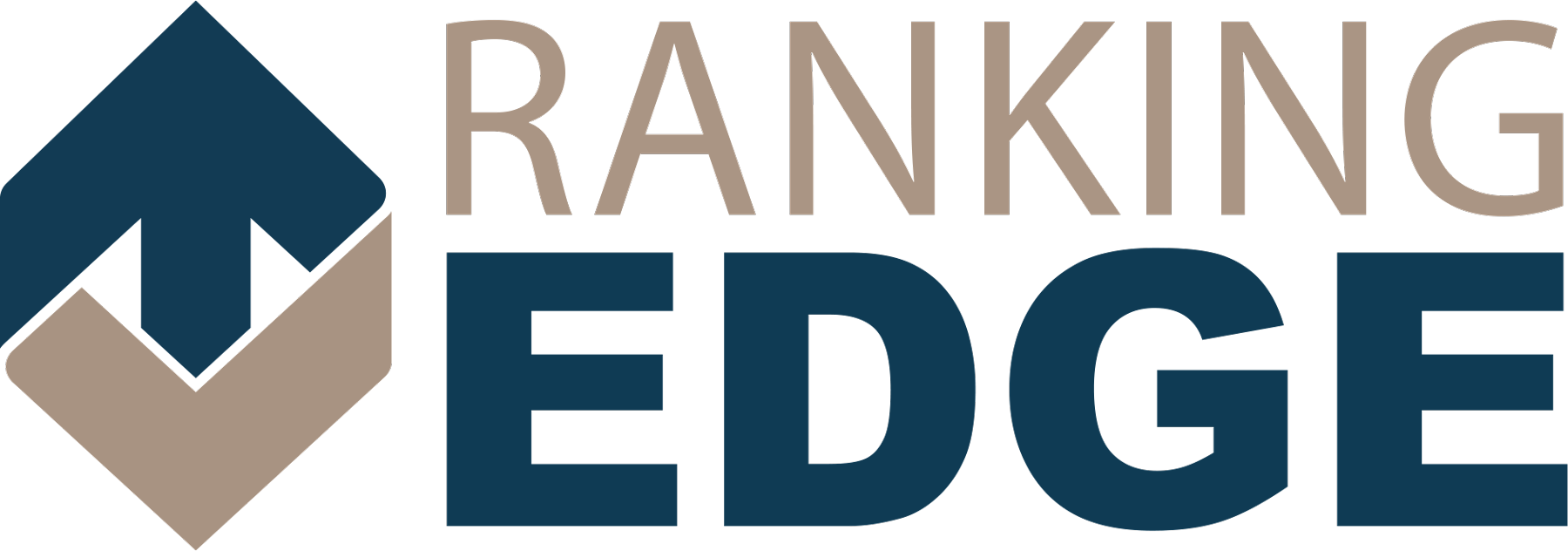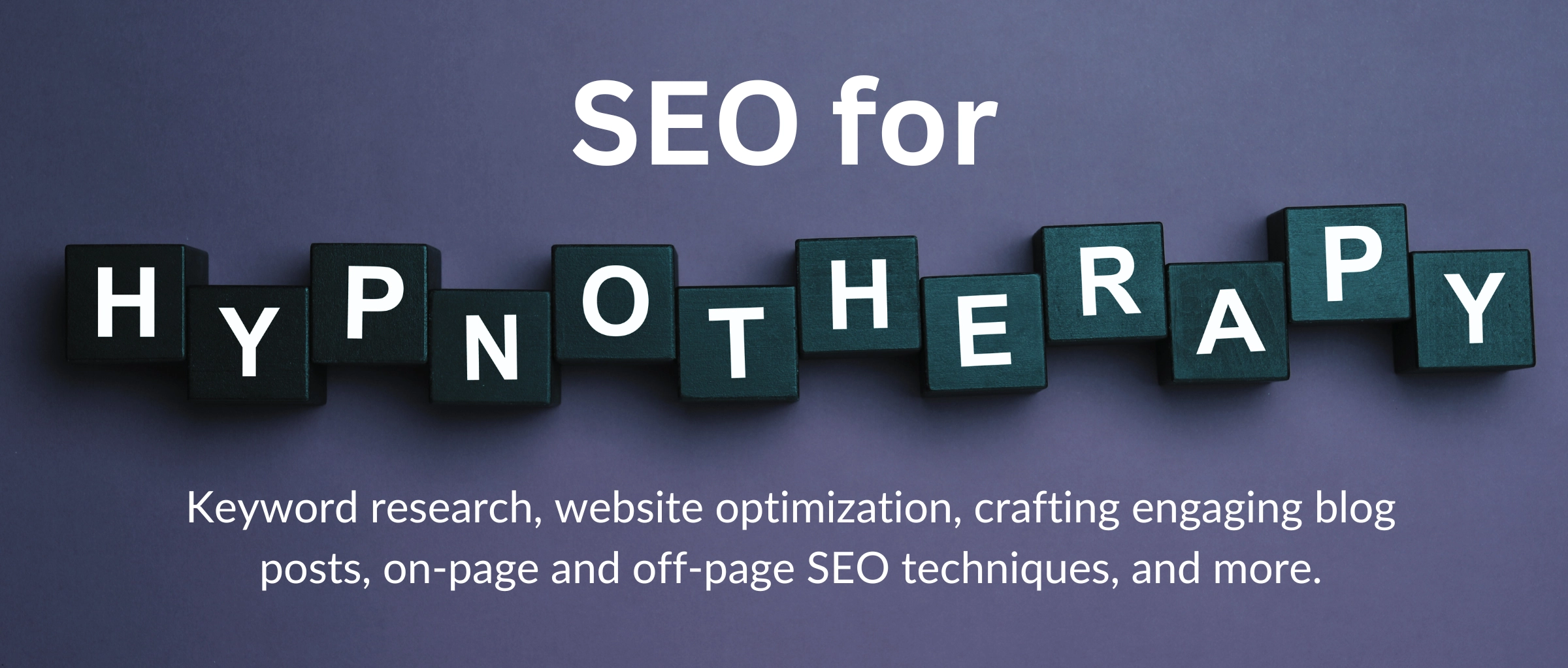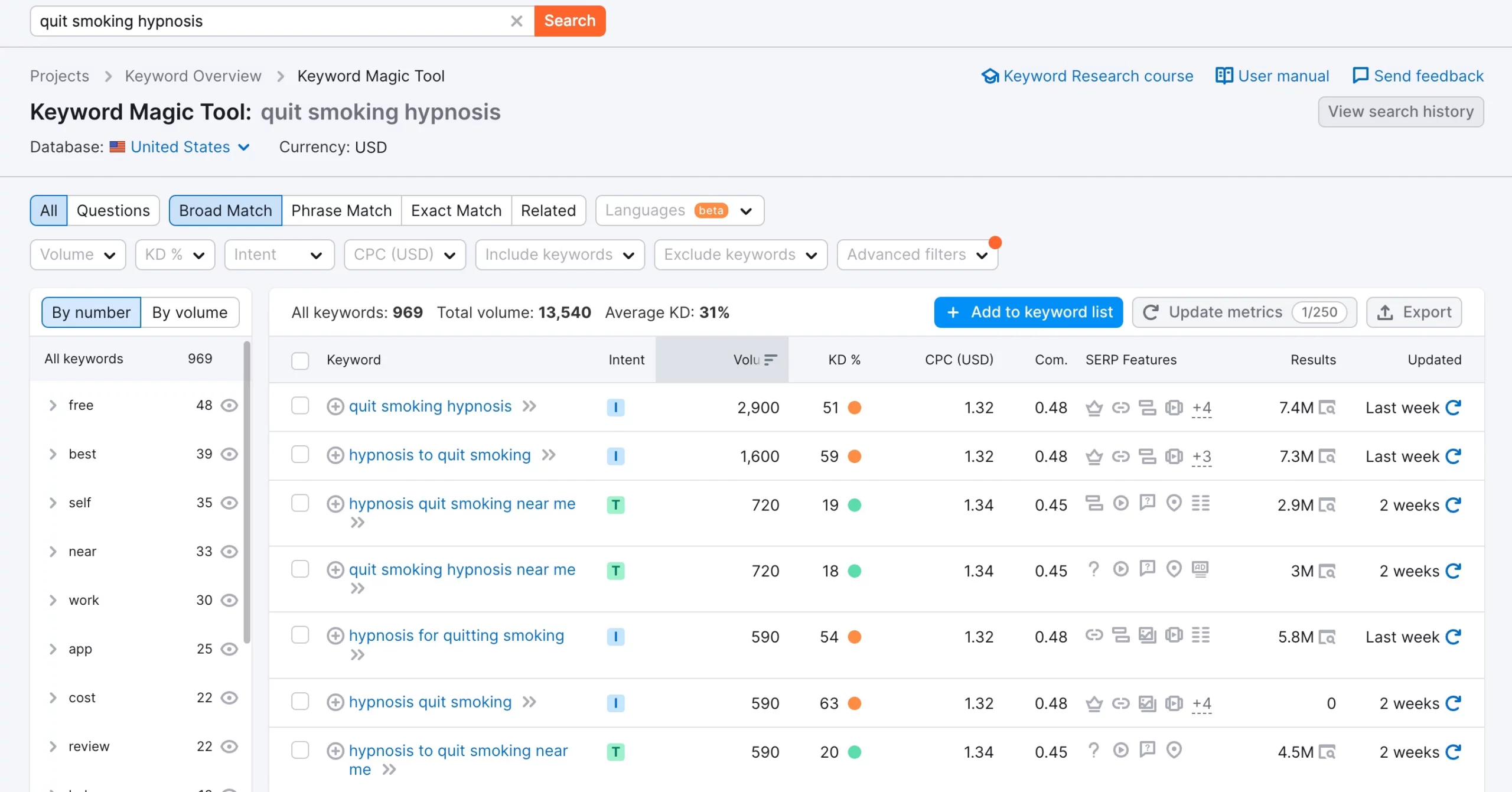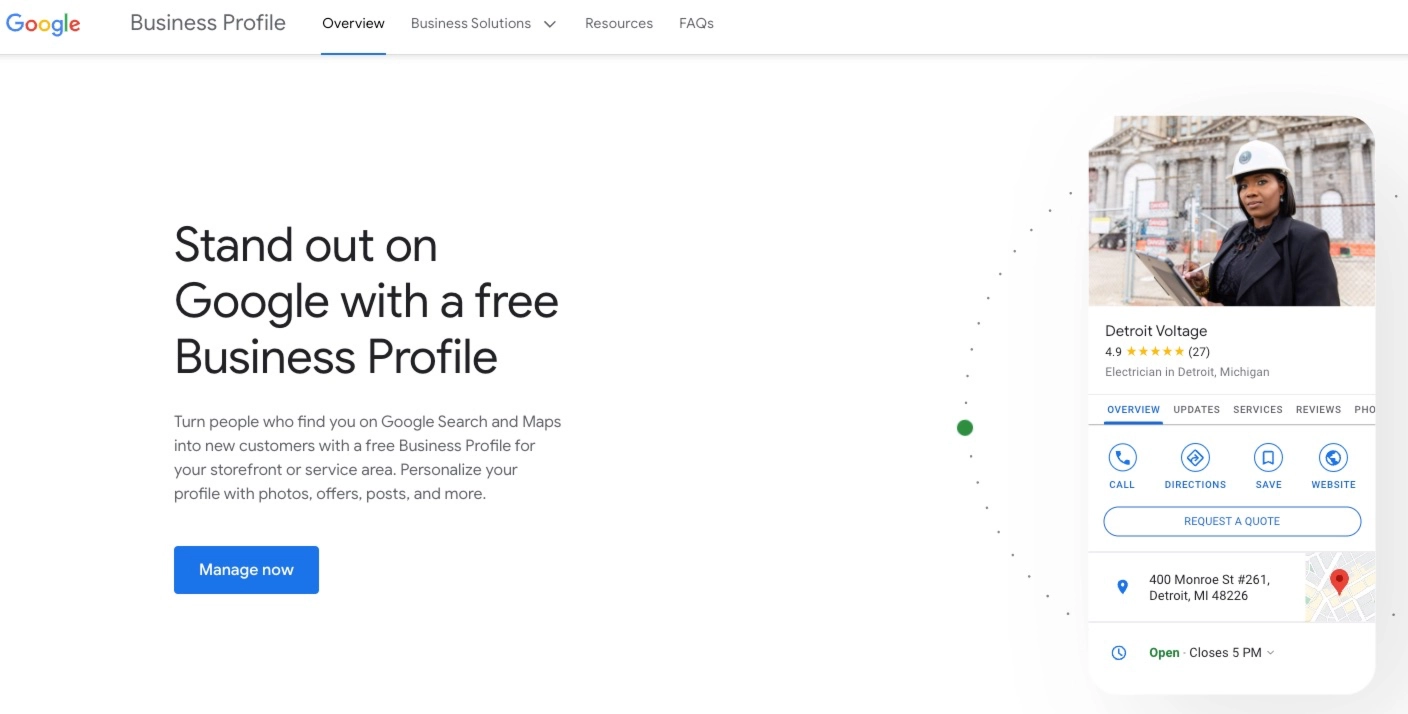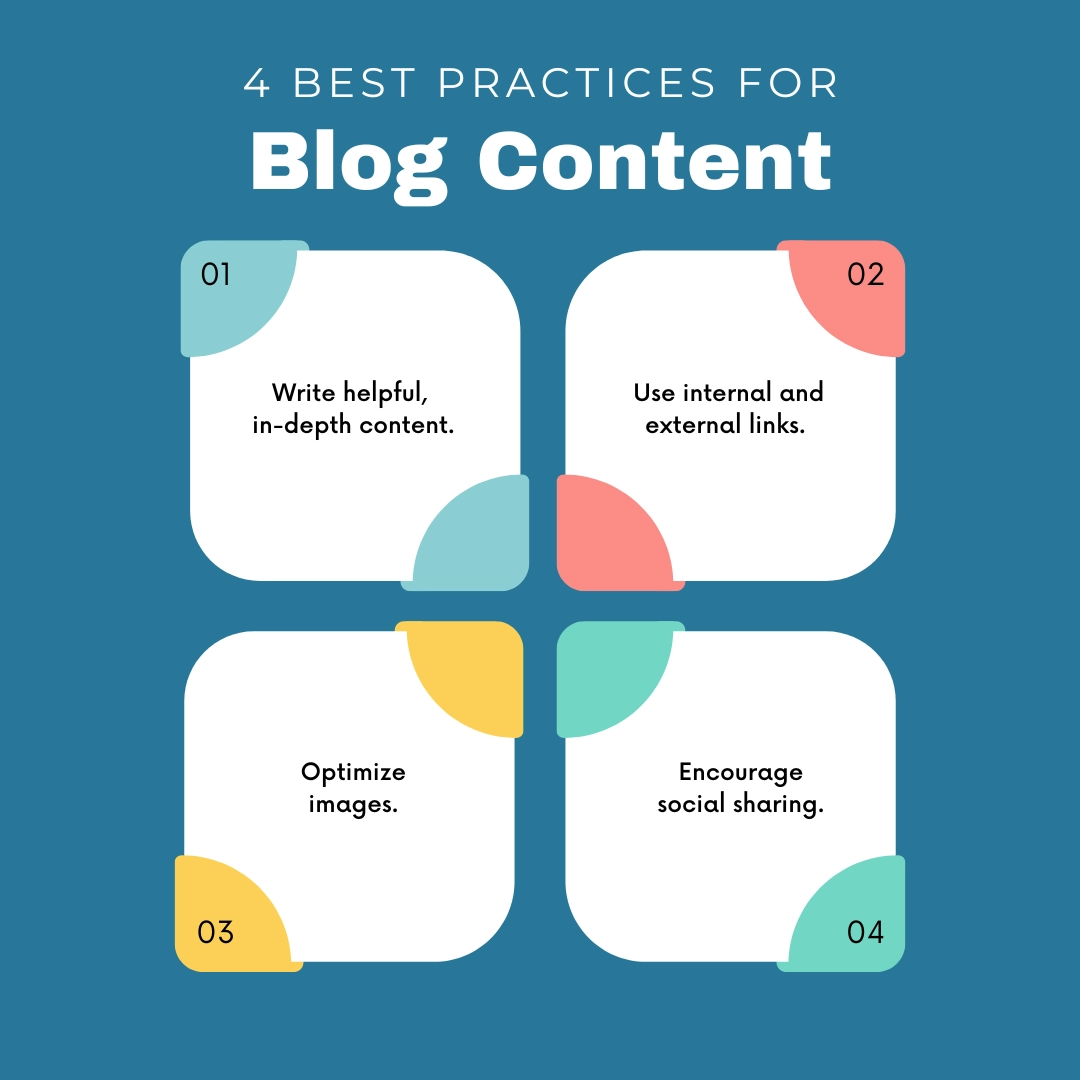For those in the world of hypnotherapy, mastering SEO for hypnotherapy is crucial in today’s digital landscape.
A strong online presence can make all the difference when it comes to attracting potential clients and climbing to the top of search results.
By optimizing your website and content for search engines, you’ll be able to reach more people. You’ll make your mark in the competitive field of hypnotherapy.
SEO for Hypnotherapy Overview
Eager to learn how to enhance your hypnotherapy marketing with SEO? You’re in the right place!
In this in-depth blog post, we’ll guide you through the critical steps to boost your online presence. We’ll delve into keyword research, website optimization, crafting engaging blog posts, on-page and off-page SEO techniques, and so much more.
Additionally, we’ll examine the impact of social media and local SEO on your hypnotherapy marketing efforts. Let’s embark on this journey together and elevate your online visibility!
Author Jason McDonald, an SEO expert, teaches an easy-to-follow method in plain English, perfect for beginners and experts alike. This book is used in his courses at Stanford University’s Continuing Studies. Reach out to Jason with questions via email or phone.
The Seven Steps to SEO Fitness framework simplifies the process of getting your website SEO-fit. Learn how to define goals, identify high-value keywords, create content that pleases Google, build links, leverage social media, and more with this comprehensive guide.
SEO for Hypnotherapy: Keyword Research
Identifying Relevant Primary and Secondary Keywords
The first step in any successful SEO strategy is identifying the right keywords. Primary keywords are the main focus of your content and should be directly related to your hypnotherapy services.
Secondary keywords, on the other hand, are related terms that can support your primary keywords and provide additional context.
Here’s an example of primary and secondary keywords for a hypnotherapy website:
Primary keywords:
- Hypnotherapy
- Hypnosis
- Hypnotherapist
Secondary keywords:
- Weight loss hypnosis
- Quit smoking hypnotherapy
- Stress reduction hypnosis
To find relevant keywords, you can use tools like Google Keyword Planner, SEMrush, or Ahrefs. These tools provide valuable insights into search volume, competition, and keyword difficulty. They help you select the best keywords for your content.
Long-Tail Keywords and Their Importance
Long-tail keywords are longer, more specific phrases that often have lower search volume but higher conversion rates.
They are essential for targeting niche audiences and addressing specific user needs. By incorporating long-tail keywords into your content, you can improve your chances of ranking higher in search results and attracting qualified leads.
Examples of long-tail keywords for hypnotherapy include:
- Hypnotherapy for anxiety relief
- Virtual gastric band hypnosis
- Hypnosis for overcoming phobias
- Sleep improvement hypnotherapy
Local SEO for Hypnotherapy Considerations
For hypnotherapy practitioners who offer in-person services, focusing on local SEO is crucial.
Local SEO helps attract clients in your geographic area and improves your visibility in local search results. To optimize for local SEO, include location-specific keywords in your content, titles, and meta descriptions.
Don’t worry, we’ll explain more about titles and meta descriptions in the next section!
Examples of location-specific keywords for hypnotherapy:
- Hypnotherapist in [city name]
- Hypnosis services in [city name]
- [city name] hypnotherapy clinic
Don’t forget to claim and optimize your Google My Business listing. We’ll discuss this in more detail in the Local SEO section.
In summary, effective keyword research involves identifying relevant primary and secondary keywords, recognizing the importance of long-tail keywords, and optimizing for local SEO.
By incorporating these strategies into your content, you’ll be well on your way to improving your search engine rankings…and reaching more potential clients.
Using Titles and Meta Descriptions for SEO for Hypnotherapy
Titles and meta descriptions are important elements for Search Engine Optimization (SEO) for hypnotherapy websites. Here’s why:
Title
The title is the main heading that appears on search engine results pages (SERP) when someone searches for something. It’s important to make the title interesting and descriptive, so people are more likely to click on it.
Meta Description
The meta description is a short summary that appears underneath the title on SERP. It provides additional information about the page and what it contains. Like the title, the meta description should also be interesting and informative.
How Does Yoast SEO Plugin Help?
The Yoast SEO plugin can help with creating optimized titles and meta descriptions for your hypnotherapy website. Here’s how:
- It analyzes your page content and suggests relevant keywords that can be used in your title and meta description.
- It shows a preview of how your title and meta description will appear on SERP. You can make edits as needed.
- It ensures that your title and meta description are within the recommended character limits for optimal display on SERP.
Using Yoast SEO plugin saves time, and effort, and ensures that your hypnotherapy website is easily discoverable by potential clients.
There is a free version of the Yoast SEO plugin that should be able to meet your needs.
List of Benefits of Using Titles and Meta Descriptions for SEO
- Increases click-through rate (CTR) on SERP.
- Attracts potential clients to your website.
- Improves website’s search engine ranking.
- Provides a clear understanding of what the page is about.
In conclusion, using optimized titles and meta descriptions with the help of Yoast SEO plugin can work wonders for your hypnotherapy website’s SEO.
Optimizing Website Structure for the Best SEO for Hypnotherapy
User-Friendly Website Layout
A well-structured, user-friendly website layout is essential for both your visitors and search engines.
A clean and intuitive design allows users to find the information they’re looking for quickly and easily. It leads to a better user experience and increased likelihood of conversion.
To create a user-friendly website layout for your hypnotherapy business, consider the following tips.
Keep your homepage clear and simple. Always have a strong call-to-action (CTA) that guides users toward booking a session or learning more about your services.
10 Examples of CTAs for a Hypnotherapy Website
- Book now and achieve your goals through hypnotherapy!
- Ready to conquer your fears and anxiety? Contact us today!
- Don’t let stress control your life anymore. Schedule a hypnotherapy session now.
- Take the first step towards a happier and healthier life. Call us to schedule a session.
- Stop smoking for good with the help of hypnotherapy. Book a session today.
- Are you struggling with weight loss? Hypnotherapy can help. Contact us to learn more.
- Experience the power of hypnotherapy and transform your life. Schedule a session today.
- Say goodbye to your limiting beliefs and achieve your dreams with hypnotherapy. Book now.
- Ready to break free from your past traumas? Book a hypnotherapy session today.
- Discover the power of your subconscious mind and achieve your goals with hypnotherapy. Contact us to learn more.
These call-to-actions provide a clear and compelling message to visitors, encouraging them to take action and book a hypnotherapy session.
Content Categories for a Hypnotherapy Website
Organize your content into logical categories, making it easy for users to navigate and find relevant information.
Here are some examples of content categories for a hypnotherapy website:
- Services: This content section should detail the different services the hypnotherapist offers, such as hypnotherapy for stress and anxiety, weight loss, smoking cessation, or past-trauma resolution.
- About: This section should include information about the hypnotherapist, their qualifications, certifications, and experience. This section could include a biography or a video introduction.
- Testimonials: This section offers powerful social proof. Showcase the experiences of satisfied clients who have benefited from hypnotherapy techniques. Include testimonials, case studies, and reviews.
- Blog: A regular blog with strong SEO-friendly content can help drive traffic to a hypnotherapy website. The blog can cover hypnotherapy topics like how hypnotherapy can help with specific issues, the science behind hypnotherapy, success stories, and more.
- Contact: The contact page should be easy to use and include a form that visitors can fill in to book a session or ask any questions they may have about hypnotherapy.
- FAQs: A helpful Frequently Asked Questions (FAQ) section can help answer common questions, such as how hypnotherapy works or what happens during a session.
- Resources: The resources section of a hypnotherapy website can include a variety of materials. List e-books, guides, and worksheets that help visitors learn more about hypnotherapy.
Having these content categories helps to clarify the purpose of your hypnotherapy website. It also helps visitors easily navigate and find the information they need.
SEO for Hypnotherapy: Clear and Concise Language that Speaks to Your Target Audience
Using clear and concise language is crucial when developing website content for a hypnotherapy website. Here’s why:
- Better Communication: Hypnotherapy is a field that is often misunderstood and sometimes subject to skepticism. Simple and straightforward language helps to explain the benefits of hypnotherapy without confusing or overwhelming visitors with technical jargon.
- Connecting with Clients: When hypnotherapists communicate with their clients, they do so using simple and accessible language. This approach can foster trust, and help clients better understand their treatment.
- Improved SEO: Hypnotherapy websites that use clear and concise language in their content are more likely to get noticed by search engines like Google. Clear and straightforward language can make website content more SEO-friendly, resulting in better visibility on search engine result pages.
- Helps Conversion: For a hypnotherapy website, the primary objective is to convert visitors into clients. One way to do this is by using persuasive language in clear and concise sentences. This approach can help establish a connection with the reader and convince them of the benefits of hypnotherapy.
- Enhances User Experience: Visitors of a hypnotherapy website typically seek help with a specific problem. Using specific language makes it easy for these visitors to find the information they need and enhances their user experience.
In short, using clear and concise language on a hypnotherapy website helps improve communication, connection with clients, SEO, and conversion rates, and enhances the user experience.
It allows a hypnotherapist to establish trust and rapport quickly with clients and helps in exhibiting a professional image.
Include a Search Bar
Including a search bar on a hypnotherapy website is highly recommended. Here’s why:
- Better Navigation: Website visitors use search bars to quickly locate information they seek rather than digging through multiple website pages. This feature helps the visitors spend less time searching for what they need, and more time engaging with your website.
- Improved User Experience (UX): Including a search bar is an easy way to enhance user experience. A good UX is essential to keep visitors engaged on a website and improve the conversion rate.
- Helps Keep Visitors on the Website: A search bar helps visitors quickly find the services, blog posts, or other pages they are looking for, thus keeping them engaged with your website for longer.
- Better SEO: Including a search bar on a website isn’t directly linked to SEO, but it does affect how long visitors stay on a website. Generally, the longer a visitor stays on a website, the higher the chances of ranking better in search results.
- Shows You Care: By including a search bar, you are showing your visitors that you want to provide the best possible user experience. A search bar also makes a website appear more professional and user-friendly.
To put it concisely, including a search bar can enhance user experience, keep visitors on a website, helps navigation, and indirectly helps SEO.
When users quickly find the information they’re looking for, they’re more likely to stay on a website, improve page views, and the site’s overall user experience.
Proper Use of Headings, Navigation, and URLs
Search engines rely on your website’s structure to understand and index your content.
To make your site more search engine-friendly, pay attention to the following elements:
- Headings: Use proper heading tags (H1, H2, H3, etc.) to structure your content and highlight the main topics. Your H1 tag should be reserved for the page title, and subsequent headings should be used to divide sections and sub-sections.
- Navigation: Ensure your site’s navigation is easy to understand and use. A well-organized menu with clear labels helps users find their way around your site and improves overall user experience.
- URLs: Create clean, descriptive, and keyword-rich URLs for each page on your site. This not only helps search engines understand your content better but also provides users with an idea of the page’s content before they click.
Mobile Optimization and Site Speed for SEO for Hypnotherapy
With the majority of web traffic coming from mobile devices, it’s crucial to ensure your hypnotherapy website is optimized for mobile users.
A responsive design that automatically adapts to various screen sizes and devices is essential for providing a seamless user experience.
Additionally, site speed is a significant factor in both user experience and search engine rankings.
To improve your site’s speed, consider the following tips:
- Optimize images by compressing them and using appropriate file formats (JPEG, PNG, or WebP).
- Minify your CSS, JavaScript, and HTML files to reduce file size and improve load times.
- Use a content delivery network (CDN) to serve your files from a server closer to your users.
- Enable browser caching to store temporary files on users’ devices, reducing load times on subsequent visits.
By focusing on a user-friendly layout, proper use of headings and navigation elements, and optimizing for mobile and site speed, you’ll create a better experience for your visitors while simultaneously improving your search engine rankings.
Writing Search Engine Optimized Hypnotherapy Blog Posts
Creating High-Quality, Informative Content
The foundation of any successful SEO strategy is high-quality, informative content that resonates with your target audience.
To create compelling blog posts for your hypnotherapy website, keep these tips in mind:
- Understand your audience: Identify your target audience’s needs, interests, and pain points. Create content that addresses these concerns and provides valuable insights.
- Be original: Offer unique perspectives, insights, or experiences that set your content apart from competitors. Avoid duplicate content or plagiarism at all costs.
- Use a conversational tone: Write in a friendly, engaging manner that encourages readers to connect with your content. Avoid overly technical jargon and use simple, everyday language.
- Provide actionable advice: Offer practical tips, techniques, or solutions that your audience can implement immediately. This helps establish your credibility and expertise in the field of hypnotherapy.
Incorporating Relevant Keywords for SEO for Hypnotherapy that Works
Once you have identified your target keywords, it’s essential to incorporate them naturally into your blog posts.
Here’s how to effectively use keywords in your content:
- Include your primary keyword in the title, headings, and first paragraph of your blog post.
- Use secondary and long-tail keywords throughout your content, without overstuffing. Aim for a keyword density of around 1-2%. The Yoast SEO plugin can help guide you on keyword density.
- Use variations and synonyms of your target keywords to avoid repetition and create a more natural flow.
- Include keywords in your meta tags, image alt text, and URL to further optimize your content for search engines.
SEO for Hypnotherapy Best Practices for Blog Content
To ensure your hypnotherapy blog posts are fully optimized for search engines, follow these SEO best practices:
- Write comprehensive, in-depth content: Longer, more detailed posts tend to perform better in search engine rankings. Aim for a minimum of 1,000 words per post, while ensuring your content remains engaging and relevant.
- Use internal and external links: Link to other related content on your website to keep users engaged and improve your site’s internal linking structure. Additionally, link to authoritative external sources to provide further information and improve your content’s credibility.
- Optimize images: Compress and optimize images for faster loading times, and include descriptive alt text with relevant keywords to improve your content’s accessibility and SEO.
- Encourage social sharing: Include social sharing buttons on your blog posts to increase the likelihood of your content being shared, which can help boost your online visibility.
By focusing on creating high-quality, informative content, incorporating relevant keywords, and following SEO best practices, you’ll improve your search engine rankings and increase the visibility of your hypnotherapy blog posts.
Hypnotherapy-Related Content Ideas
List of Blog Post Topics and Content Ideas
To keep your audience engaged and maintain a consistent posting schedule, it’s essential to have a wide variety of content ideas.
Here are 10 hypnotherapy-related blog post topics and content ideas to get you started:
- Common misconceptions about hypnosis and hypnotherapy
- How hypnotherapy can help with specific issues (e.g., weight loss, stress management, addiction, etc.)
- Client success stories and case studies
- The science behind hypnosis and how it works
- Tips for self-hypnosis and guided meditation
- The history of hypnosis and its evolution over time
- The benefits of virtual or online hypnotherapy sessions
- Frequently asked questions about hypnotherapy and their answers
- Hypnosis techniques and tools used by hypnotherapists
- The role of hypnotherapy in alternative and complementary medicine
Tips for Generating Fresh Content Regularly that Improves SEO for Hypnotherapy
To maintain a steady flow of fresh content for your hypnotherapy blog, consider these tips:
- Create a content calendar: Plan your blog topics and posting schedule in advance to ensure you have a consistent stream of content.
- Monitor industry news and trends: Stay informed about the latest developments in the hypnotherapy field, and create timely content that addresses these topics.
- Invite guest contributors: Collaborate with other professionals or experts in the field to provide fresh perspectives and insights.
- Repurpose existing content: Update and republish older blog posts, or transform them into different formats like videos, infographics, or podcasts.
- Conduct keyword research regularly: Continuously research new keywords and topics to identify new content opportunities.
Balancing Promotional and Informational Content
A successful content strategy should strike a balance between promotional and informational content.
To achieve this balance, consider the following tips:
- Follow the 80/20 rule: Aim for 80% of your content to be informational and 20% to be promotional. This ensures that your audience finds value in your content without feeling overwhelmed by sales pitches.
- Incorporate subtle promotions: Seamlessly integrate promotional content into your informational posts by mentioning your services, linking to your booking page, or sharing client success stories.
- Use CTAs strategically: Include clear calls-to-action in your blog posts, encouraging readers to learn more about your services, sign up for a consultation, or join your mailing list.
- Create value-driven promotional content: When promoting your services, focus on the benefits and value you provide to clients, rather than just listing your offerings.
By generating a diverse range of content ideas, maintaining a consistent posting schedule, and balancing promotional and informational content, you’ll keep your audience engaged and position yourself as an authority in the field of hypnotherapy.
On-Page SEO for Hypnotherapy Content
Optimizing Meta Tags, Header Tags, and Image Alt Text
On-page SEO is crucial for improving your content’s visibility and search engine rankings.
To optimize your hypnotherapy content effectively, focus on the following elements:
- Meta tags: Write compelling and keyword-rich meta titles and descriptions for each page and blog post. This helps search engines understand your content and encourages users to click on your link in search results.
- Header tags: Use header tags (H1, H2, H3, etc.) to structure your content and make it easy for both search engines and users to identify the main topics. Be sure to include relevant keywords in your header tags.
- Image alt text: Add descriptive and keyword-rich alt text to your images, making your content more accessible to visually impaired users and helping search engines understand your images’ context.
Internal Linking Strategies
Internal linking plays a vital role in enhancing your website’s SEO and user experience.
To create an effective internal linking strategy for your hypnotherapy content, consider the following tips:
- Link to relevant content: When creating a new blog post or page, look for opportunities to link to other related content on your site. This helps users explore your website further and encourages them to spend more time on your site.
- Use descriptive anchor text: When adding internal links, use clear and descriptive anchor text that informs users what to expect from the linked content. Avoid using generic phrases like “click here” or “learn more.”
- Avoid excessive linking: While internal linking is essential, be mindful not to overdo it. Aim for a natural linking pattern that provides value to your users without overwhelming them with too many links.
Content Formatting for Readability and SEO for Hypnotherapy
Proper content formatting is crucial for both readability and SEO.
To ensure your hypnotherapy content is easy to read and optimized for search engines, keep the following guidelines in mind:
- Use short paragraphs: Break your content into short paragraphs of 2-3 sentences to improve readability and make it easier for users to digest the information.
- Write short sentences: Shorter sentences enhance text readability, making it easier to read. Readability plays a crucial role in SEO.
- Utilize bullet points and numbered lists: When presenting lists or steps, use bullet points or numbered lists to make your content more scannable and user-friendly.
- Emphasize key points: Use bold or italic text to emphasize important points or keywords, making it easy for users to identify the most relevant information.
- Add images and multimedia: Include relevant images, videos, or infographics to break up large blocks of text and make your content more engaging and visually appealing.
Optimizing meta tags, header tags, and image alt text, implementing effective internal linking strategies, and formatting content for readability and SEO can improve the search engine rankings of a hypnotherapy website.
In doing so, a better user experience for site visitors can be created, thereby leading to more click-throughs, page views, and engagement.
By paying attention to these content areas, hypnotherapy websites can better position themselves in search results while also presenting information in a way that’s clear, accessible, and informative.
Off-Page SEO for Hypnotherapy Marketing
Off-page SEO is essential for increasing your hypnotherapy website’s visibility and credibility.
By focusing on the following off-page SEO strategies, you’ll boost your search engine rankings and drive more traffic to your site.
Guest Posting Opportunities
Guest posting involves creating content for other websites or blogs in your industry. This can help you establish yourself as an authority in the hypnotherapy field, expand your reach, and obtain valuable backlinks.
Consider these tips for successful guest posting:
- Research relevant websites: Look for authoritative websites, blogs, or online publications in the hypnotherapy, wellness, or mental health niches that accept guest posts.
- Pitch valuable content: Create unique and high-quality content ideas that would benefit the host website’s audience. Tailor your pitch to show how your content will add value to their site.
- Include a relevant author bio: In your author bio, briefly introduce yourself, mention your expertise in hypnotherapy, and include a link back to your website.
Social Media Promotion
Promoting your hypnotherapy content on social media platforms can help increase your online visibility, drive traffic to your site, and attract new clients.
Use the following social media promotion strategies:
- Share your content across multiple platforms: Post your blog articles, videos, or other content on platforms such as Facebook, Twitter, LinkedIn, Instagram, and Pinterest to reach a wider audience.
- Engage with your audience: Respond to comments, answer questions, and participate in relevant online communities to build relationships and establish trust with potential clients.
- Utilize hashtags and keywords: Include relevant hashtags and keywords in your social media posts to increase their visibility and reach.
- Collaborate with influencers: Partner with influencers in the wellness or mental health niches to share your content with their audiences and gain credibility.
Backlink Building Strategies and SEO for Hypnotherapy
Backlinks, or inbound links from other websites, are an essential factor in search engine rankings.
To build high-quality backlinks for your hypnotherapy website, consider the following strategies:
- Create valuable, shareable content: Publish high-quality, informative, and engaging content that others in your industry will want to link to or share.
- Network with industry professionals: Connect with other professionals in the hypnotherapy, wellness, or mental health industries and build relationships that can lead to valuable backlinks.
- Participate in online forums and communities: Join relevant online forums or communities, contribute valuable insights, and include a link to your website in your profile or signature where appropriate.
- Monitor your backlink profile: Regularly review your backlink profile using tools like Google Search Console or Ahrefs, and remove or disavow any low-quality or spammy links that may harm your website’s credibility.
By focusing on guest posting opportunities, social media promotion, and backlink-building strategies, you’ll strengthen your off-page SEO and increase the visibility of your hypnotherapy website in search engine results.
Measuring and Analyzing SEO Performance
To ensure your hypnotherapy SEO and marketing efforts are effective, it’s crucial to measure and analyze your performance regularly.
This will help you identify areas of improvement and make data-driven decisions for your marketing strategy.
Using Analytics Tools and Performance Metrics
To measure your SEO performance, make use of analytics tools and focus on key performance metrics. Some popular tools and metrics to consider include:
- Google Analytics: Track essential metrics like organic traffic, bounce rate, time on site, and goal completions to gauge your website’s performance.
- Google Search Console: Monitor your website’s search performance, indexation status, and technical issues, while also identifying keywords that drive traffic to your site.
- Keyword ranking tools: Use tools like Ahrefs, SEMrush, or Moz to track your keyword rankings and identify opportunities for improvement.
- Conversion rate: Measure the percentage of visitors who complete a desired action on your site, such as signing up for a consultation or subscribing to your newsletter.
Monitoring SEO Progress
Regularly monitoring your SEO progress is essential for understanding the impact of your efforts and making informed decisions. Consider the following tips for monitoring your SEO progress:
- Set up regular reporting: Schedule monthly or quarterly reports to review your SEO performance and track your progress over time.
- Establish benchmarks: Define your website’s current performance as a baseline to measure your progress against future improvements.
- Monitor competitors: Keep an eye on your competitors’ SEO performance and strategies to identify new opportunities or areas where you need to improve.
Making Adjustments Based on Data Analysis
After analyzing your SEO performance, use the insights to make data-driven adjustments to your strategy. Some potential adjustments may include:
- Refining your keyword strategy: Identify underperforming keywords and replace them with more relevant or higher-performing ones.
- Improving on-page optimization: Make necessary changes to your website’s layout, navigation, or content structure to enhance user experience and SEO.
- Revising content strategy: Analyze the performance of your existing content and identify gaps or opportunities for improvement. This may include updating old content, creating new content, or changing your content mix.
- Adjusting off-page SEO tactics: Evaluate the effectiveness of your backlink building, guest posting, and social media promotion efforts, and make necessary adjustments to improve your results.
By using analytics tools, monitoring your SEO progress, and making adjustments based on data analysis, you’ll ensure your hypnotherapy marketing strategy stays effective and delivers the best possible results for your practice.
Local SEO for Hypnotherapy Practitioners
Local SEO is crucial for hypnotherapy practitioners who serve clients in specific geographic areas. By focusing on local SEO strategies, you can improve your visibility in local search results and attract more clients from your target location.
Optimizing Google My Business Listings
Google My Business (GMB) is a free tool that allows businesses to manage their online presence across Google Search and Maps.
To optimize your GMB listing for local SEO, follow these steps:
- Claim and verify your listing: If you haven’t already, claim your GMB listing and complete the verification process to ensure you have control over your business information.
- Provide accurate and up-to-date information: Ensure your business name, address, phone number, website, and operating hours are accurate and consistent with the information on your website and other online listings.
- Add relevant categories: Choose the most appropriate categories for your hypnotherapy practice to help Google understand the nature of your business and show your listing for relevant local searches.
- Include images and videos: Add high-quality photos and videos of your practice, staff, or events to showcase your business and make your listing more engaging.
- Post regular updates: Share updates, promotions, events, or news related to your hypnotherapy practice to keep your audience informed and engaged.
Generating Positive Reviews
Online reviews play a significant role in local SEO, as they help build trust and credibility for your hypnotherapy practice. To generate positive reviews, consider the following strategies:
- Request reviews from satisfied clients: After a successful session or treatment, ask your clients to share their experience on your GMB listing or other review platforms.
- Make it easy to leave reviews: Provide clear instructions and direct links to your GMB listing or other review platforms on your website, in emails, or on social media.
- Respond to reviews: Show appreciation for positive reviews and address any concerns raised in negative reviews professionally and courteously.
Using Local Keywords for Geographic Targeting
Incorporating local keywords into your SEO strategy helps your hypnotherapy practice rank higher in location-based search results.
To effectively target local searchers, follow these tips:
- Conduct local keyword research: Use keyword research tools to identify relevant local keywords, such as “hypnotherapy in [city name]” or “hypnosis near me.”
- Optimize on-page elements: Include local keywords in your meta tags, header tags, content, and image alt text to improve your website’s local search visibility.
- Create location-specific content: Publish blog posts or web pages that cater to local audiences, such as articles about hypnotherapy events in your area or testimonials from local clients.
By optimizing your Google My Business listing, generating positive reviews, and using local keywords for geographic targeting, you’ll improve your hypnotherapy practice’s local SEO and attract more clients from your target location.
The Role of Social Media in Hypnotherapy Marketing
Social media plays a significant role in hypnotherapy marketing, as it provides an opportunity to connect with your target audience, promote your services and content, and enhance your online presence.
By leveraging social media effectively, you can boost your SEO efforts and attract more clients to your practice.
Utilizing Social Media Platforms to Connect with the Target Audience
Different social media platforms offer unique opportunities to connect with your target audience.
To maximize your reach and engagement, consider these strategies:
- Choose the right platforms: Identify the social media platforms most popular among your target audience, such as Facebook, Instagram, Twitter, LinkedIn, or Pinterest, and focus your efforts on those channels.
- Create and share valuable content: Publish informative, engaging, and shareable content that resonates with your target audience, such as blog posts, videos, images, or infographics related to hypnotherapy.
- Interact with your audience: Respond to comments, messages, and inquiries in a timely and professional manner, and participate in relevant online communities and discussions to build relationships and establish trust with potential clients.
Promoting Services and Content
Social media provides an excellent platform for promoting your hypnotherapy services and content.
To effectively market your practice on social media, follow these tips:
- Share your latest blog posts and content updates: Regularly post links to your latest blog articles or content updates, along with engaging captions that encourage users to click through and read more.
- Showcase your services and expertise: Highlight the benefits of your hypnotherapy services, share success stories, and demonstrate your expertise by posting tips, insights, or thought leadership content.
- Offer promotions or discounts: Encourage potential clients to try your services by offering special promotions, discounts, or limited-time offers exclusively for your social media followers.
Enhancing Online Presence and Boosting SEO Efforts
Social media can play a crucial role in enhancing your online presence and supporting your SEO efforts.
By implementing the following strategies, you can improve your search engine rankings and increase your website traffic:
- Share your content across multiple platforms: By sharing your content on various social media channels, you increase the likelihood of earning backlinks, which can improve your search engine rankings.
- Encourage user-generated content: Invite your audience to share their experiences with your hypnotherapy services or create content related to your practice. This can generate valuable social proof, attract new clients, and create additional backlink opportunities.
- Optimize your social media profiles: Include relevant keywords, your website URL, and a clear call-to-action in your social media bios to make it easy for users to find and engage with your hypnotherapy practice.
By utilizing social media platforms to connect with your target audience, promoting your services and content, and enhancing your online presence, you’ll support your SEO efforts and drive more traffic and clients to your hypnotherapy practice.
Final Thoughts and Conclusion of SEO for Hypnotherapy
Recap of the Key Points Discussed
In this blog post, we have explored various aspects of SEO for hypnotherapy practitioners and hypnotherapy marketing.
We discussed the importance of keyword research, optimizing your website’s structure, writing search engine optimized blog posts, generating content ideas, on-page and off-page SEO strategies, measuring and analyzing SEO performance, focusing on local SEO, and leveraging social media in hypnotherapy marketing.
Implement the Strategies for Success in Hypnotherapy Marketing
Implementing these strategies will help you improve your online visibility, drive more traffic to your website, and ultimately, attract more clients to your hypnotherapy practice.
By investing time and effort in developing and executing an effective SEO and marketing strategy, you’ll set your hypnotherapy business up for long-term success.
Remember that SEO and online marketing are ongoing processes that require consistent effort and adaptation.
Stay informed about the latest trends and best practices in SEO and digital marketing. Be prepared to adjust your strategies as needed.
With persistence and dedication, you’ll see the positive impact of these efforts on your hypnotherapy practice’s growth and success.
